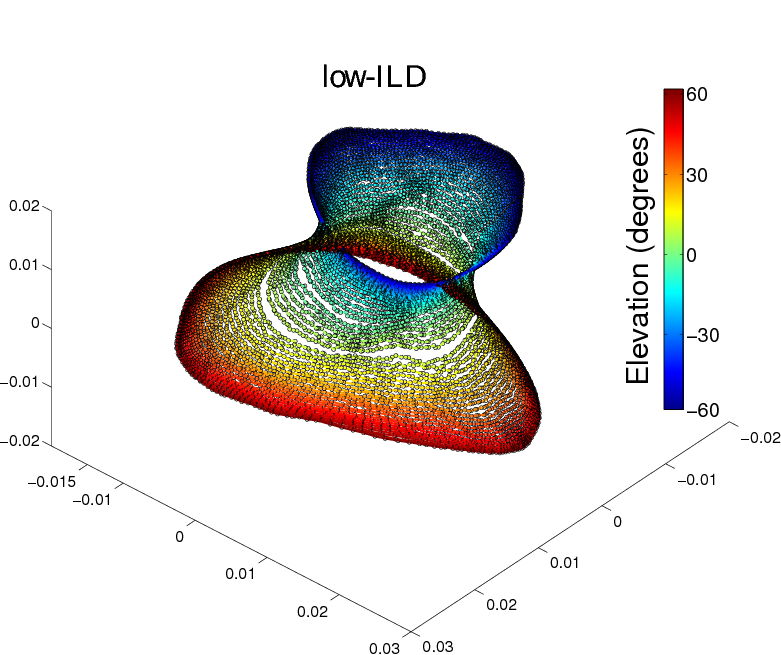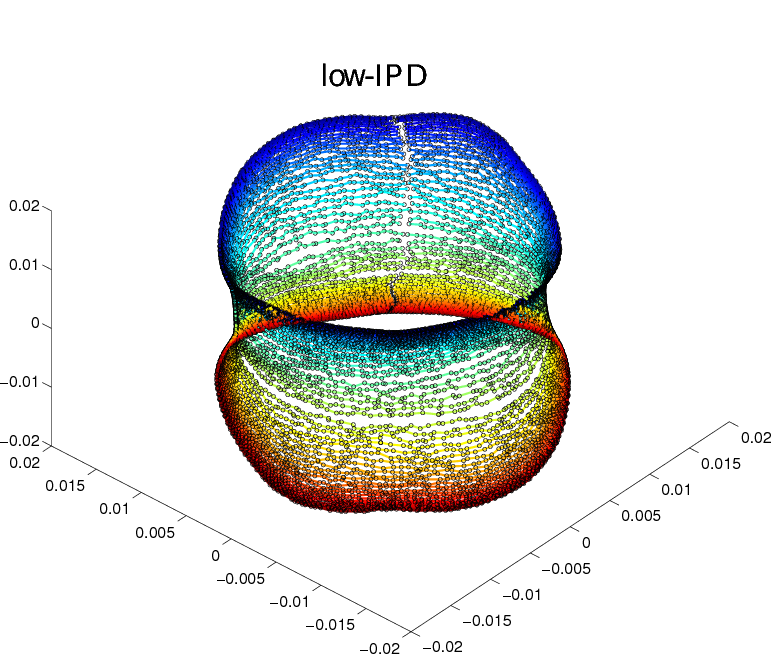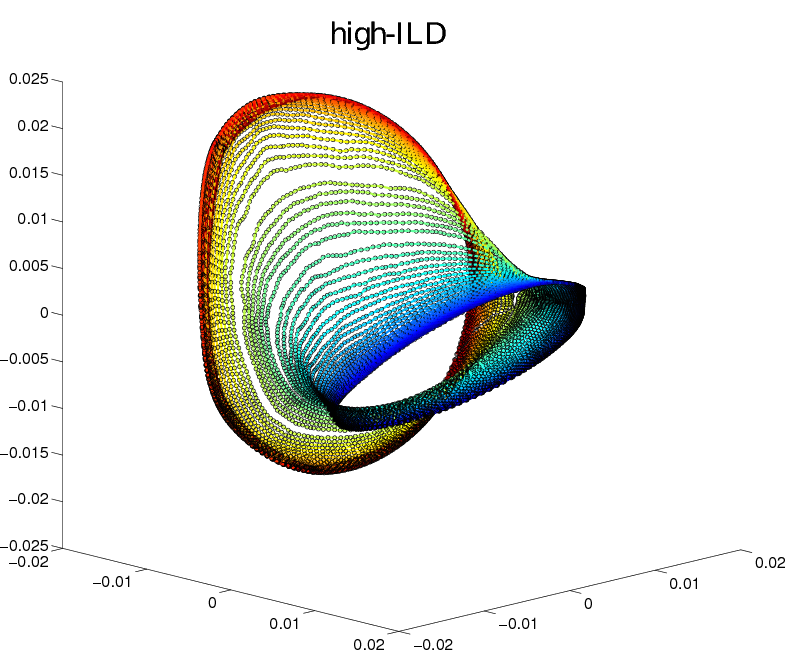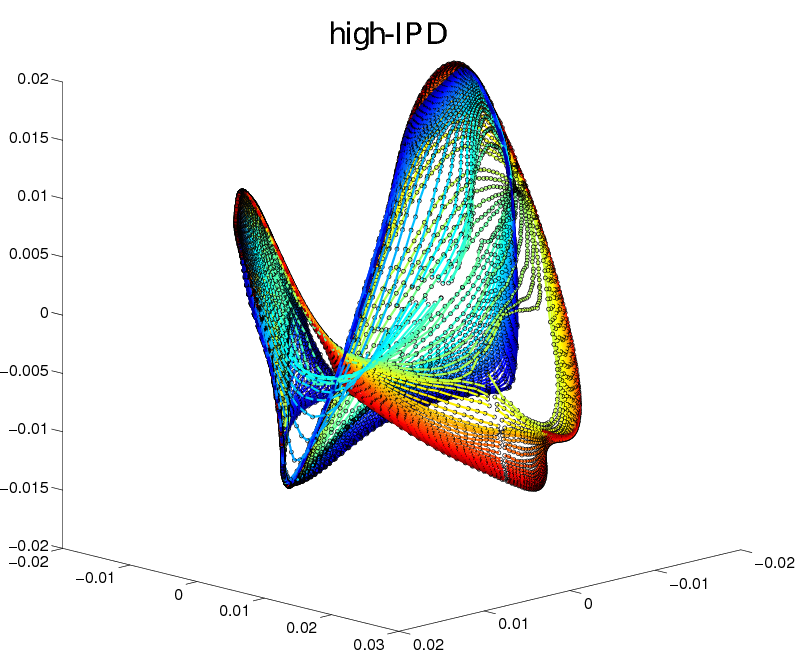Section: New Results
Acoustic Space Learning on Binaural Manifolds
We addressed the problems of modeling the acoustic space generated by a full-spectrum sound source and of using the learned model for the localization and separation of multiple sources that simultaneously emit sparse-spectrum sounds. We lay theoretical and methodological grounds in order to introduce the binaural manifold paradigm. We perform an in-depth study of the latent low-dimensional structure of the high-dimensional interaural spectral data, based on a corpus recorded with a human-like audiomotor robot head, namely the POPEYE robot shown on Fig 3 (right). A non-linear dimensionality reduction technique is used to show that these data lie on a two-dimensional (2D) smooth manifold parameterized by the motor states of the listener, or equivalently, the sound source directions, e.g., Fig. 4 . We propose a probabilistic piecewise affine mapping model (PPAM) specifically designed to deal with high-dimensional data exhibiting an intrinsic piecewise linear structure. We derive a closed-form expectation-maximization (EM) procedure for estimating the model parameters, followed by Bayes inversion for obtaining the full posterior density function of a sound source direction. We extend this solution to deal with missing data and redundancy in real world spectrograms, and hence for 2D localization of natural sound sources such as speech. We further generalize the model to the challenging case of multiple sound sources and we propose a variational EM framework. The associated algorithm, referred to as variational EM for source separation and localization (VESSL) yields a Bayesian estimation of the 2D locations and time-frequency masks of all the sources. Comparisons of the proposed approach with several existing methods reveal that the combination of acoustic-space learning with Bayesian inference enables our method to outperform state-of-the-art methods [18] , [24] .
Website: https://team.inria.fr/perception/research/acoustic-learning/
|





